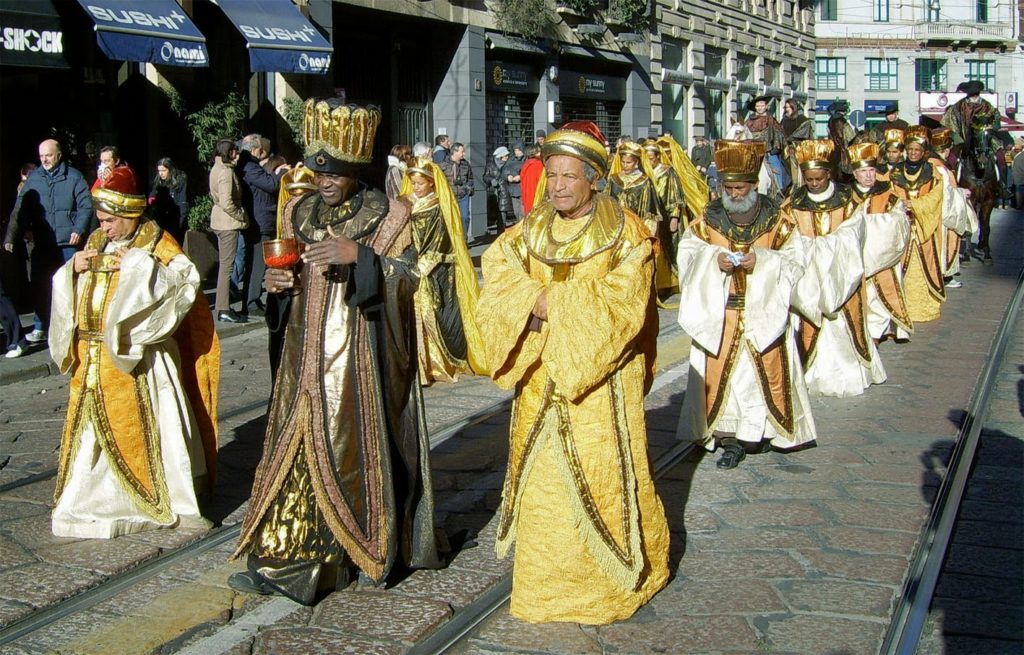On the occasion of the Epiphany, on January 6th, a tradition is revived in Milan, which has now become a Christmas classic. This is the procession of the three kings, an occasion in which the Milanese gather in a historical procession that, starting from the Duomo, reaches the Basilica of Sant’Eustorgio.
Sant’Eustorgio and the Three Wise Kings
The choice of the ancient Church of Sant’eustorgio is not accidental. In this Basilica, according to the legend, the Holy Eustorgio, returning from a voyage to Constantinople, laid the remains of the three kings, brought back from the Holy Land.
The tradition of the Magi’s procession in Milan, which started in 1960, has a secular history behind it. This Milanese tradition, in fact, is rooted in the fourth century, when Bishop Eustorgio transported the remains of the Magi from Constantinople to the Lombard capital. The parade, however, dates back to 1336 when the celebration of the Three Kings was officially established. Furthermore, in 1347, the “School of the three Magi” was instituted at the Church of Sant’Eustorgio, their main task being the organization of the sacred representation. The procession was suppressed by St. Charles Borromeo, perhaps at a time when it lost its most religious sense, to be restored in the late ‘ 50.
The procession of the Three Wise Kings
The procession, obviously includes the appearance of the three Three Wise Kings: Gaspare, Melchiorre and Baldassarre, together with figures in costume of shepherds, infantry and knights, marching bands and circus animals. After the solemn blessing, the procession takes the steps from the Duomo, crosses via Torino and reaches the pillars of San Lorenzo. Here it stops in the homonymous Basilica where the Magi meet King Herod. Then it continues along the Corso di Porta Ticinese, to reach the Basilica of Sant’Eustorgio.

Once they have reached this goal, the three Kings pay homage to the infant Jesus, offering gold, incense and myrrh in the living Nativity scene that is prepared for the occasion in front of the church.
The remains of the Magi, preserved in a bronze urn, are exhibited on the altar dedicated to them during the afternoon mass.


